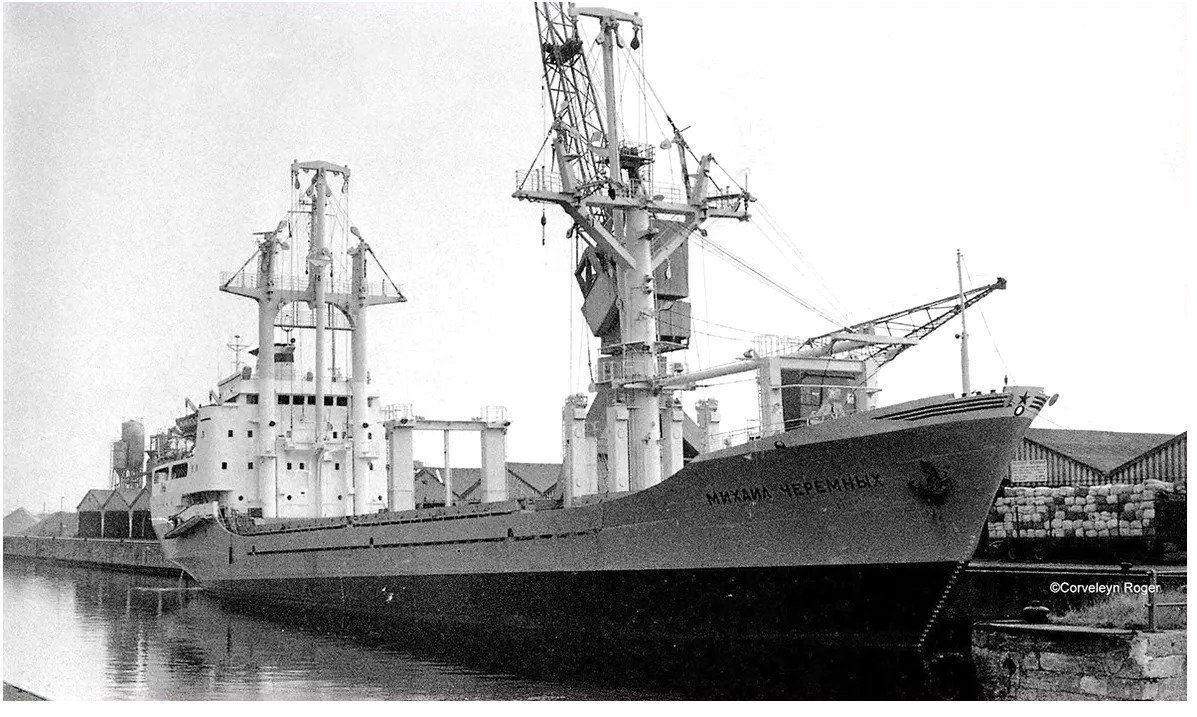From Arkhangelsk to Rotterdam
Growing up in the industry
The first time I stepped aboard a vessel it was 1980. I was only a few months old. The ship was the mighty MV Mikhail Cheremnyh built in 1973. At that time the crew for such a ship consisted of more than 20 people, including a doctor and a maid. My father was 3rd mate aboard and I grew to understand what it meant to be a seaman’s daughter, to have his warm return home every 8 months.
When at sea my father would send a telegraph home, all written in code, with no dots or commas. Its contents were usually something like "what size shoe are the children now? Perhaps a visit to C&A should be paid to buy a few new pairs?’’
Children grow fast when their fathers are away for months, and feet grow pretty fast too. On every vessel, there was a radio operator who would decipher all the communication between the company, the agents, and the families. Equipped with a pair of headphones the radio operator was the sole point of contact and sat ready to write down any stocking sizes, cargo orders, or demands.
From sailing north of Russia with my father, being thrown around the cabin like a ragdoll during a raging storm to mapping out the vessel's course, I never did leave the transport world.
Then I worked as a translator for the Russian woodcutters supplying timber to the Norwegian paper industry. And summers between studies were spent working in forwarding and logistic companies, trying to figure out what a cargo manifest was or how the sale of a vessel takes place. When I finally entered the proper job market, it was at a desk in Rotterdam in logistic operations management.
From Telex to Today
At work, the audible commotion from the telex machine became a familiar sound. Telexes were a network of teleprinters used to send text-based messages. It seems hard to imagine today but the speed of the telex was about 66 words per minute and was expensive.
From what I recall the cost per word was about 2 USD, one message, one minute, could cost 120 dollars. At such a price great caution was taken about how many characters a telex contained and as a result, the wonderful world of abbreviations came into play.
In the past, handwritten letters posted in every imaginable postbox across the globe and the odd overpriced phone call were the only way to keep in contact with those back home. Times have drastically changed since then, yet the business has remained the same, the physical transportation from A to B. Goods still need to be moved across borders, be it by sea, land, or air.
However, while the act of transportation has remained the same, the world's demands have not. Long gone are the days of the expensive and limiting telex service, now I can watch the developments in the Panama Canal all from the comfort of my desk here in Holland.
Needless to say, there have been huge changes in how the cargo transportation world communicates. In this day and age the world expects their information to be available instantaneously. Additionally our demands and expectations are higher and given this we need tools that help us achieve these requests.
Technology can be this tool. It is undeniable that technology is the way of the future and that is why I joined Cargosnap a little over a year ago. It is equally exciting and challenging to be part of this world and this environment.
Cargosnap is a SaaS company and at the core of our work is the desire to simplify; to reduce your cargo claims as well as inconveniences. Our efforts lead to jobs and tasks becoming less complex.
Curious to know how you can get rid of complex processes and standardize your operations? Read about it here.
About Cargosnap
Cargosnap empowers logistics teams to document, manage, and share their inspections - together with visual evidence - from one single place. Made by Logistics experts for Logistics experts Cargosnap's solution is designed to eliminate manual errors, saving you time and money and giving real transparency to everyone in the supply chain.
About Port x Logistics
Founded in 2017, Port X Logistics sets the gold standard of service by providing innovative solutions for drayage, trans-loading, and trucking services in the US & Canada. With the support of cloud-based technology, they develop creative supply chain solutions, real visibility, and an advisory approach.






